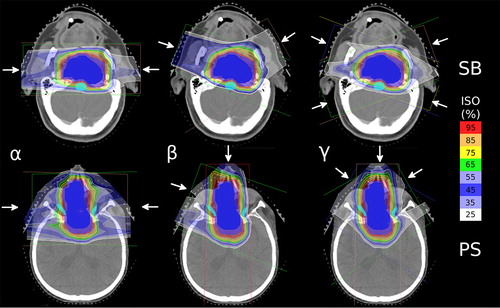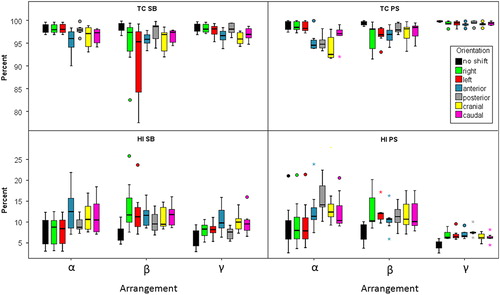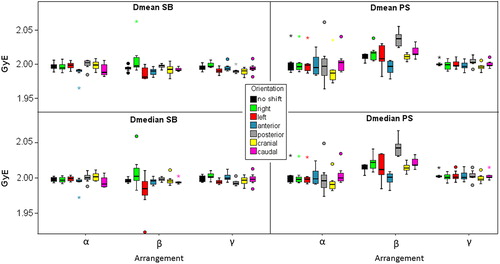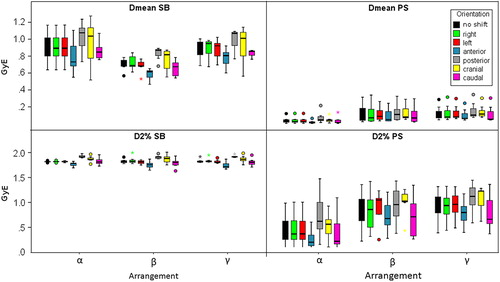Figures & data
Figure 1. Representative layer of a SB (upper row) and PS (lower row) case. The left column depicts beam arrangement α (two lateral opposed beam ports). The central column represents one representative setup of beam arrangement β (individual OAR sparing two beam arrangement) while the right column shows beam arrangement γ (four (SB) and three (PS) beam ports, respectively).

Table I. Initial treatment planning results (P0) for both tumor indications and all beam arrangements. BS, brainstem; Dmean, average dose; Dmedian, median dose; D2%, near maximum dose (dose to 2% of the respective volume); HI, homogeneity index; OC, contra-lateral optical nerve; OI, ipsi-lateral optical nerve; TC, target coverage.
Figure 2. Boxplots representing target coverage (TC) as well as dose homogeneity (HI) of both tumor indications influenced by translational shifts of the patients for the three beam arrangements.

Figure 3. Boxplots representing average (Dmean) and median dose (Dmedian) to the target volume of both tumor indications influenced by translational shifts of the patients for the three beam arrangements.

Figure 4. Boxplots representing average (Dmean) and near maximum dose (D2%) to the brainstem of both tumor indications influenced by translational shifts of the patients for the three beam arrangements.

Table II. Treatment plan robustness as a function of beam arrangements for the skull base indication. Δ of the various dosimetric indices are calculated according to formula 1. Median values are listed. a, anterior; cd, caudal; cr, cranial; l, left, p, posterior; r, right. Individual Pshift represent respective directions in which statistically significant differences between beam arrangements were obtained.
Table III. Treatment plan robustness as a function of beam arrangements for the paranasal sinus indication. ΔMi are calculated according to formula 1. Median values are listed. a, anterior; cd, caudal; cr, cranial; l, left; p, posterior; r, right. Individual Pshift represent respective directions in which statistically significant differences between beam arrangements were obtained.